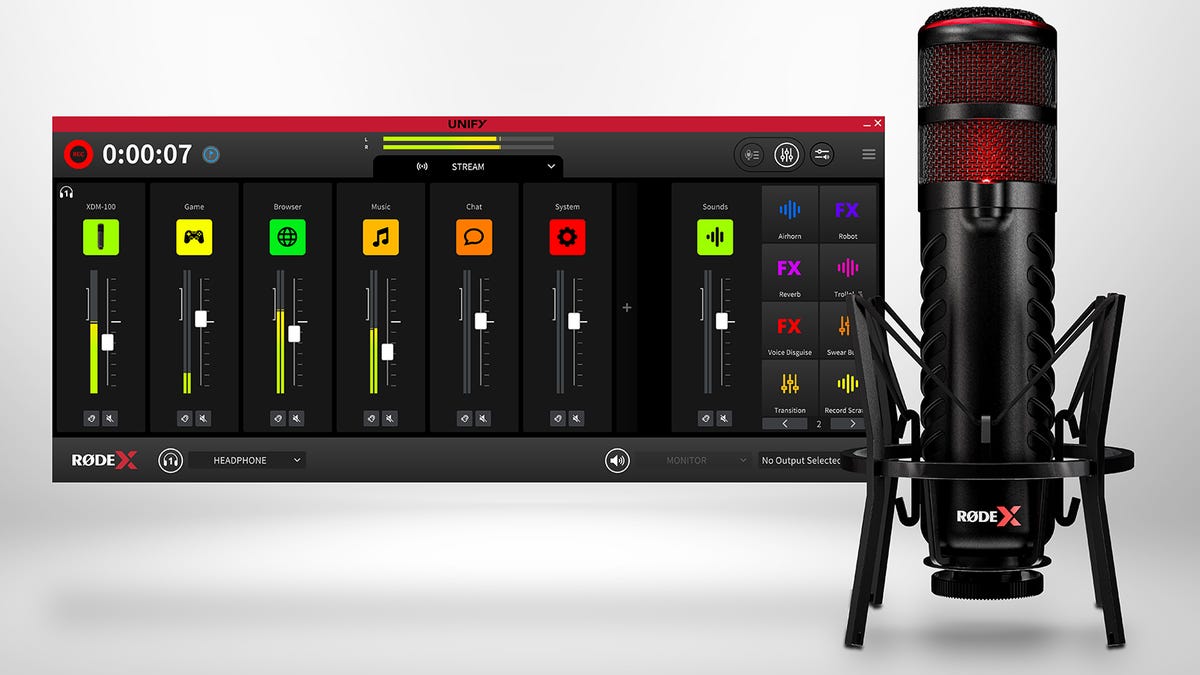
Rode
You’ve likely seen a lot of Rode products, even if you don’t necessarily realize it. The Rode name appears on many a microphone, mic stand, or other piece of audio equipment quietly sitting in front of your favorite celebrity or podcaster while doing its job of helping to capture pro-level sound.
This is the company’s first sub-brand. Rode
The fact that Rode has also made some excellent, affordable options in recent years means that its equipment is already sitting on the desks of many high-profile streamers and pro gamers.
Now, Rode has decided to exploit the extant hunger for gaming hardware by launching an entire sub-brand dedicated to producing software and hardware for gaming.
Dubbed Rode X, the new division launches with a trio of offerings: two microphones and a new software platform called Unify. The company describes Unify as a “virtual mixing solution custom-designed for streaming and gaming.”
It aims to consolidate the functionality of multiple apps into one package. This includes mixing the input of up to four USB microphones or other audio devices with up to six virtual audio sources, such as game sound, voice chat, and music.
Also: The best lights for streaming on Twitch, YouTube, and TikTok
Unify also supports creating independent sub-mixes for different outputs, adding “studio-grade” audio processing to individual mic channels, sound effects, multi-track recording, and more. The software will ship free with all Rode X products, and is also available via a monthly subscription.
The XDM-100 being used alongside the Unify software. Rode
To exploit the capabilities of Unify, Rode X is also coming into the world with two new microphones.
The first of these, the XDM-100, resembles the Rode Procaster microphone I recently praised in a review, but with a red-and-black gamer aesthetic, and a reliance on USB-C connectivity instead of an XLR output.
The dynamic microphone comes packed with Rode’s “ultra-low-noise, high-gain Revolution Preamp,” and “high-resolution 24-bit/48 kHz analog-digital conversion” technology. The audio device maker claims this will ensure “pristine audio quality.”
The XDM-100 includes a built-in, zero-latency monitoring port so you can get a direct feed of your own sound. Rode
Other features include an unusual pop shield with a rubberized exoskeleton built in, an included shock mount, and a zero-latency 3.5mm jack for monitoring your audio.
The XCM-50 has a much smaller footprint and is designed to provide a warm sound with its condenser capsule. Rode
Alongside the larger mic, Rode also debuted the compact XCM-50, a condenser microphone designed for “highly detailed voice reproduction with incredible warmth and presence thanks to its full frequency response.” It also includes a zero-latency monitoring port alongside its USB-C output, but relies on an internal pop shield and a shock-mounted capsule to prevent unwanted noises.
The tabletop tripod could pull double duty for your camera when you’re not using it with the XCM-50. Rode
Where the XDM-100 will require a boom arm or stand to be provided for it, the XCM-50 ships with a tabletop tripod.
More: The 5 best streaming mics: Start that podcast or Twitch channel
We’ve already got both the XDM-100 and XCM-50 in house for testing, so keep your eyes peeled for full reviews of both microphones and how they perform using Rode’s new Unify software.
Looking further forward, Rode also plans to debut additional Rode X devices in 2023 and beyond. Rode CEO Damien Wilson claims that there are “groundbreaking products currently in development that are going to shape the future of audio for streaming and gaming.”
